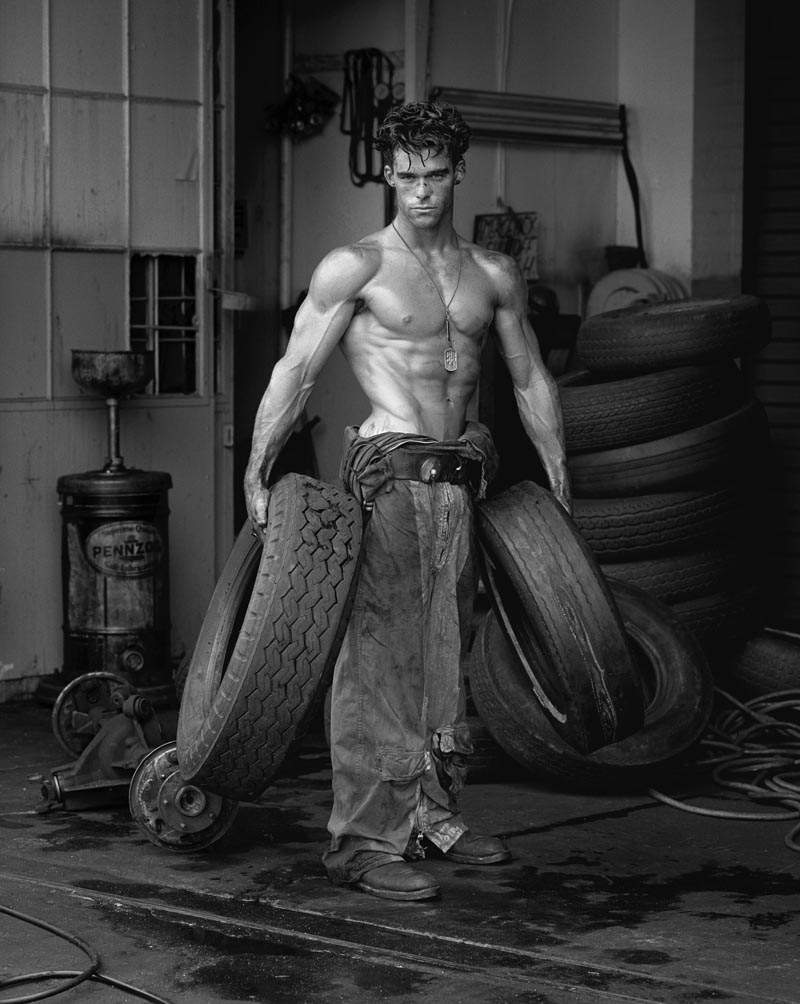The MAST Foundation in Bologna has opened its doors to the exhibition Uniform into the work/Out of the work that, from Jan. 25 to May 5, 2020, highlights the role of work uniforms.
With more than 600 shots by major international photographers, the exhibition, curated by Urs Stahel, aims to show the multiple types of clothing worn by workers in different historical, social and professional contexts. Created to distinguish the wearer, uniforms on the one hand show membership in a category, order or corps, without distinction of class or census, and on the other can highlight a separation from the community. The Italian words “uniform” and “uniform” evoke, at the same time, inclusion and exclusion.
The project includes a group exhibition on work uniforms in the images of 44 photographers and a monographic exhibition by Walead Beshty, which brings together hundreds of portraits of art-world insiders encountered by the artist over the course of his career, for whom the highly differentiated and individualistic professional attire respects a kind of tacit code of anti-uniformity.
On display come works by photographers such as Manuel Alvarez Bravo, Walker Evans, Arno Fischer, Irving Penn, Herb Ritts, August Sander and contemporary photographers such as Paola Agosti, Sonja Braas, Song Chao, Clegg & Guttmann, Hans Danuser, Barbara Davatz, Roland Fischer, Andrè Gelpke, Helga Paris, Tobias Kaspar, Herline Koelbl, Paolo Pellegrin, Timm Rautert, Oliver Sieber, Sebastião Salgado, images from unknown collectors’ albums, and eight video contributions by Marianne Müeller.
The point of departure is the fact that throughout the world a distinction is still made between “blue collar” and “white collar,” two expressions that have become established in many languages of industrialized society. Inspired by work attire, a distinction is made between different professional and then social forms and categories: on the one hand the blue tunic or overalls of factory workers, on the other hand the white collar as a symbol of the suit jacket and pants, white shirt and tie of those who perform administrative and managerial functions.
The exhibition thus aims to pose as a journey through uniforms in order to prompt reflection on being and appearing: the work uniforms photographed by Graciela Iturbide, the aprons starring in the “small trades” (as Irving Penn calls them) of the fishmonger and the butcher, the overalls of the coal unloaders in the port of Havana portrayed by Walker Evans, the clothes of the peasants in the color shots of Albert Tübke, the overalls of the female workers in the assembly workshops of Fiat, in Turin, in the photographs of Paola Agosti. Then again, in Barbara Davatz ’s images, the work clothes of employees in a small Swiss factory are compared with the uniforms of apprentices at Switzerland’s largest food retailer (the Migros chain) photographed by Marianne Müller, Florian van Roekel ’s white collars provide a counterpoint to the black overalls of miners in the photos of Chinese Song Chao, and the female workers in a garment factory immortalized by Helga Paris. Workwear also includes protective clothing, which is the focus of images by both Mexican Manuel Álvarez Bravo and Hitoshi Tsukiji, who focuses on Toshiba’s safety gloves, as well as Sonja Braas, Hans Danuser and Doug Menuez, who focus on overalls. In the nine portraits by August Sander, considered one of the most famous portraitists of the 20th century, the symbiosis of person, profession and social role emerges rather than the essence of individuals. In fact, the photographer’s focus is on the social rather than the aesthetic function of photography, with the intention of constructing a faithful image of his own era.
The exhibition then guides the audience from work attire to uniform with the seven impressive portraits of the soldier “Olivier” by Rineke Dijkstra, the civilian uniforms of Timm Rautert’s series, clothes of the monk and the nun photographed by Roland Fischer to the portraits of Angela Merkel in the nine photographs by Herlinde Koelbl, the renowned German artist who has dedicated a multi-year project, Traces of Power, to the year-by-year depiction of some of Germany’s major political leaders, starting in 1989, the year of the fall of the Berlin Wall. Again, Sebastião Salgado immortalizes the repose of a worker from the Safety Boss Company, Kuwait, engaged in operations to extinguish oil wells set on fire by Iraqis in 1991 during the Gulf War. Works by Olivier Sieber, Andreas Gelpke, Andri Pol, Paolo Pellegrin, Herb Ritts, and Weronika Gesicka depict the gradual transformation of workwear and uniform into style and fashion along with Barbara Davatz ’s series Beauty lies within, which photographs some H&M salespeople outside of the work context. Tobias Kaspar’s photographs of embroideries from the archives of a Swiss textile manufacturer ideally close the exhibition. On large monitors eight security personnel in duty uniforms, featured in as many videos by Marianne Müller, “watch over” visitors.
The exhibition opens Tuesday through Sunday from 10 a.m. to 7 p.m. and admission is free. For all information you can visit the official website of the MAST Foundation.
Pictured is one of the workers portrayed by Herb Ritts.
 |
| Bologna, work uniforms the focus of Uniform into the work/Out of the work project |
Warning: the translation into English of the original Italian article was created using automatic tools. We undertake to review all articles, but we do not guarantee the total absence of inaccuracies in the translation due to the program. You can find the original by clicking on the ITA button. If you find any mistake,please contact us.